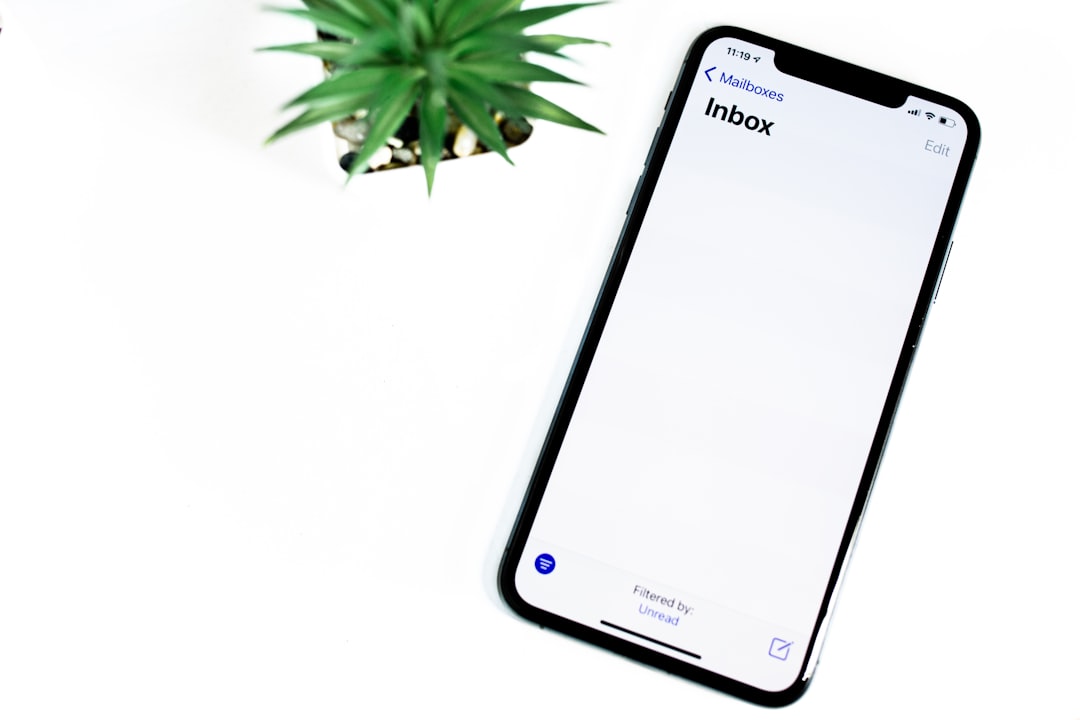Table of Contents
- Introduction
- Crafting compelling subject lines to capture attention
- Personalizing email content based on audience segmentation
- Leveraging storytelling to engage leads in the awareness stage
- Implementing A/B testing to optimize email performance
- Using data-driven insights to nurture leads in the consideration stage
- Incorporating social proof to enhance credibility
- Designing persuasive calls-to-action for decision stage emails
- Automating follow-up sequences to maintain engagement
- Conclusion
- Frequently Asked Questions
Introduction
Embarking on the journey to skyrocket your sales might seem like navigating a labyrinth of complex marketing strategies. Yet, there’s one often-overlooked treasure map every business can leverage without breaking the bank: the art of email content optimization. When wielded masterfully, email marketing transforms how your business engages with its audience at every step of the sales funnel. From captivating subject lines that ensure your emails get opened, to personalized content that engages your reader, mastering each stage can tremendously amplify your conversion rates.
But where should you begin, and how can you assure that your emails consistently hit the mark? Join us as we delve into the pivotal aspects of email content optimization across the funnel stages. To make it easier, we’ve broken down critical elements into manageable actions. Here’s a sneak peek:
| Stage | Focus |
|---|---|
| Top of the Funnel | Awareness |
| Middle of the Funnel | Consideration |
| Bottom of the Funnel | Decision |
As you grasp the strategy of tailoring your email content to align with each specific stage, you’ll uncover the potential to captivate, engage, and convert like never before!
Crafting compelling subject lines to capture attention
The subject line is the first point of contact between your email and the recipient, making it crucial to craft one that captures attention instantly. A well-crafted subject line can significantly impact open rates and engagement levels. To optimize your subject lines for different stages of the sales funnel, start by personalizing them. Using the recipient’s name or referencing a recent interaction can create a sense of connection and urgency. Additionally, clarity and brevity are key; a subject line that is clear and to the point can quickly convey the email’s value, making it more likely to be opened.
Moreover, employing powerful words that evoke curiosity or emotion can entice recipients to open the email. Phrases like “exclusive offer” or “limited time” can create a sense of urgency that prompts quick action. A/B testing different subject lines can also offer insights into what resonates best with your audience at various stages in the sales funnel. By continually refining your strategy based on performance data, you can enhance the effectiveness of your email campaigns and successfully guide prospects through the sales funnel.
Personalizing email content based on audience segmentation
Personalizing email content based on audience segmentation is a powerful strategy to enhance engagement and conversion rates. By dividing your audience into segments according to specific criteria such as demographics, purchase behavior, or engagement levels, you can tailor your messaging to meet the unique needs and preferences of each group. This makes your communications more relevant and appealing to the recipients.
For instance, when targeting new leads, you might focus on introductory offers and educational content that introduces your brand and explains how your products or services solve their problems. Conversely, for existing customers, you can provide personalized product recommendations based on their purchase history or special loyalty rewards to encourage repeat purchases.
Moreover, using data analytics, you can refine these segments over time, continuously improving the personalization of your emails. This approach not only builds a stronger relationship with your audience but also increases the likelihood of conversion at different stages of the sales funnel, turning potential leads into loyal customers.
Leveraging storytelling to engage leads in the awareness stage
When engaging leads in the awareness stage, leveraging storytelling is a powerful tactic to capture attention and foster interest. At this initial stage, potential customers are just beginning to recognize a problem or need. Using compelling narratives allows your brand to connect on an emotional level, making your message memorable and relatable. By crafting stories that resonate with the day-to-day experiences of your target audience, you effectively illustrate the benefits and solutions your product or service offers without overtly selling.
For instance, sharing customer success stories or innovative use cases through email can highlight how others have overcome similar challenges with your offerings. This approach builds credibility and helps position your brand as a reliable problem solver. Furthermore, engaging stories can maintain the recipient’s attention long enough to guide them through the journey of understanding their needs.
By humanizing your content and connecting with your audience’s values or pain points, storytelling can serve as a bridge between awareness and increased interest, setting the stage for deeper engagement in subsequent stages of the sales funnel.
Implementing A/B testing to optimize email performance
A/B testing, also known as split testing, is a pivotal tactic for optimizing email content to enhance performance. By testing two variations of a single email, marketers can gather data on what resonates best with their audience. This involves creating two versions of the email with a single variable that differs, such as subject lines, call-to-action buttons, or visuals. The audience is then split into two groups, with each receiving one of the versions.
The strength of A/B testing lies in its ability to provide clear insights backed by data, allowing marketers to make informed decisions. These tests can help identify the elements that drive higher open rates, click-through rates, and conversions. For instance, marketers might discover that a specific type of subject line encourages more recipients to open the email, leading to adjustments in future email strategies.
To ensure effective A/B testing, it is important to clearly define the metrics for success beforehand, such as open rates or click rates. Additionally, tests should be run long enough to gather significant data, considering factors like audience size and engagement levels. By continuously implementing A/B tests, businesses can fine-tune their email strategies for different stages of the sales funnel, ultimately fostering stronger customer engagement and driving sales growth.
Using data-driven insights to nurture leads in the consideration stage
During the consideration stage of the sales funnel, leveraging data-driven insights is crucial for nurturing leads effectively. At this stage, potential customers are weighing their options and seeking detailed information about the products or services they are interested in. By utilizing data analytics, marketers can tailor their email content to individual preferences and behaviors. Analyzing metrics such as click-through rates, time spent on specific content, and previous interactions can provide a clearer picture of a lead’s interests and needs.
Personalization plays a key role here. Customized emails that address potential customers by name and focus on their established preferences increase engagement. A/B testing can be employed to refine messaging and identify which content resonates best with the audience. Additionally, offering educational content, such as case studies, product comparisons, and in-depth guides, can help leads make informed decisions.
Finally, automation platforms that track user behavior can segment leads effectively and ensure timely follow-ups. By integrating these data-driven insights into the email marketing strategy, businesses can enhance the likelihood of conversion by building trust and providing value to leads throughout the consideration stage.
Incorporating social proof to enhance credibility
Incorporating social proof into email content is a powerful tactic to enhance credibility at various stages of the sales funnel. Social proof, a psychological phenomenon where people imitate the actions of others, can significantly influence decision-making. By showcasing testimonials, reviews, and case studies, businesses can build trust with potential customers.
At the awareness stage, including snippets of customer reviews can spark interest. Prospective customers are more likely to engage with your brand when they see positive experiences from others. During the consideration stage, detailed case studies or success stories can provide in-depth insights into how your product or service has benefitted others, helping prospects evaluate their choices.
In the final decision-making stage, highlighting endorsements from industry experts or showcasing awards can reassure prospects of their decision’s validity. It’s also beneficial to include social media mentions or user-generated content that reflects genuine customer satisfaction. These tactics not only amplify your brand’s credibility but also humanize it, making it more relatable and trustworthy in the eyes of the consumer.
Remember, authenticity is key; ensure that the social proof you incorporate is credible and verifiable. By thoughtfully integrating social proof, you can effectively support prospects through their buying journey, thereby boosting conversions.
Designing persuasive calls-to-action for decision stage emails
Designing persuasive calls-to-action (CTAs) for decision stage emails is crucial as this is the point where potential customers are ready to make a purchase decision. A well-crafted CTA can bridge the gap between interest and conversion. To start, ensure that your CTA is clear and concise, using action-oriented words like “Buy Now,” “Get Started,” or “Claim Your Offer.” The language should create a sense of urgency without being pushy, encouraging immediate action without overwhelming the reader.
Positioning is key; place the CTA prominently in the email where it can easily grab attention. Using contrasting colors can make the button stand out, increasing the likelihood of clicks. Personalization is also important—tailor the message to address the specific needs or interests of the recipient, making them feel valued and understood.
Additionally, accompany your CTA with compelling visuals or testimonials that reinforce the benefits of your offering. Providing a risk-free option, such as a money-back guarantee, can alleviate potential hesitations, empowering the recipient to move forward confidently.
Finally, make sure the landing page associated with your CTA matches the promise made in the email, ensuring a smooth transition that maintains user engagement.
Automating follow-up sequences to maintain engagement
Automating follow-up sequences is a powerful strategy to maintain and enhance customer engagement throughout the sales funnel. By leveraging automation, businesses can ensure timely and relevant communication with leads and customers without expending excessive manpower. These automated sequences can be customized based on user behavior, ensuring that the content resonates with the recipient’s current stage in the purchase journey. For instance, initial follow-ups can focus on nurturing relationships by providing valuable insights or resources, while subsequent emails might encourage action, such as scheduling a demo or exploring a discount offer.
Implementing triggers, based on specific actions like email opens, click-throughs, or website visits, can help in sending personalized responses tailored to the user’s interests. This not only enhances the customer’s journey but also increases the likelihood of conversion by keeping the brand top-of-mind. Additionally, automating follow-ups allows businesses to consistently engage with potential buyers, minimizing the risk of lost sales opportunities due to forgotten or delayed responses. Ultimately, automated follow-up sequences offer a scalable solution to foster deeper relationships and drive results, making them an indispensable tool in the email marketing arsenal.
Conclusion
Mastering email content optimization for every stage of the sales funnel is an essential skill for any business aiming to boost sales. From captivating subject lines that capture the recipient’s attention to personalized content that speaks directly to audience segments, each element plays a crucial role in progressing leads through the funnel. Techniques such as storytelling, incorporating social proof, and using data-driven insights ensure that emails resonate with recipients, building trust and cultivating interest.
Leveraging A/B testing and automating follow-up sequences further enhances email effectiveness, allowing marketers to refine strategies based on solid data and maintain engagement without excessive effort. Thoughtfully designed calls-to-action guide prospects towards conversion, offering incentives and reassuring them of the value of their decision.
By adapting email strategies to address the unique needs and behaviors at each stage of the funnel, businesses can significantly enhance their sales performance. Ultimately, mastering these techniques not only skyrockets sales but also fosters lasting relationships with customers, ensuring continued growth and success.

